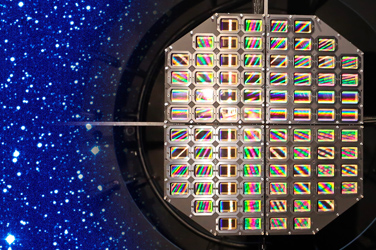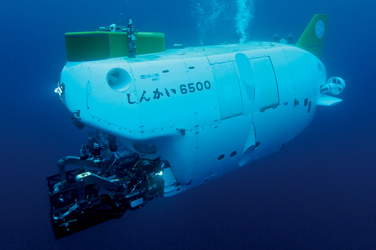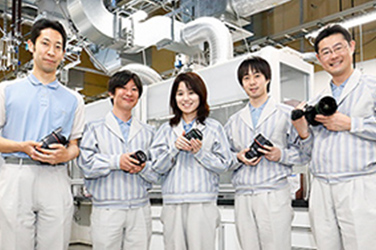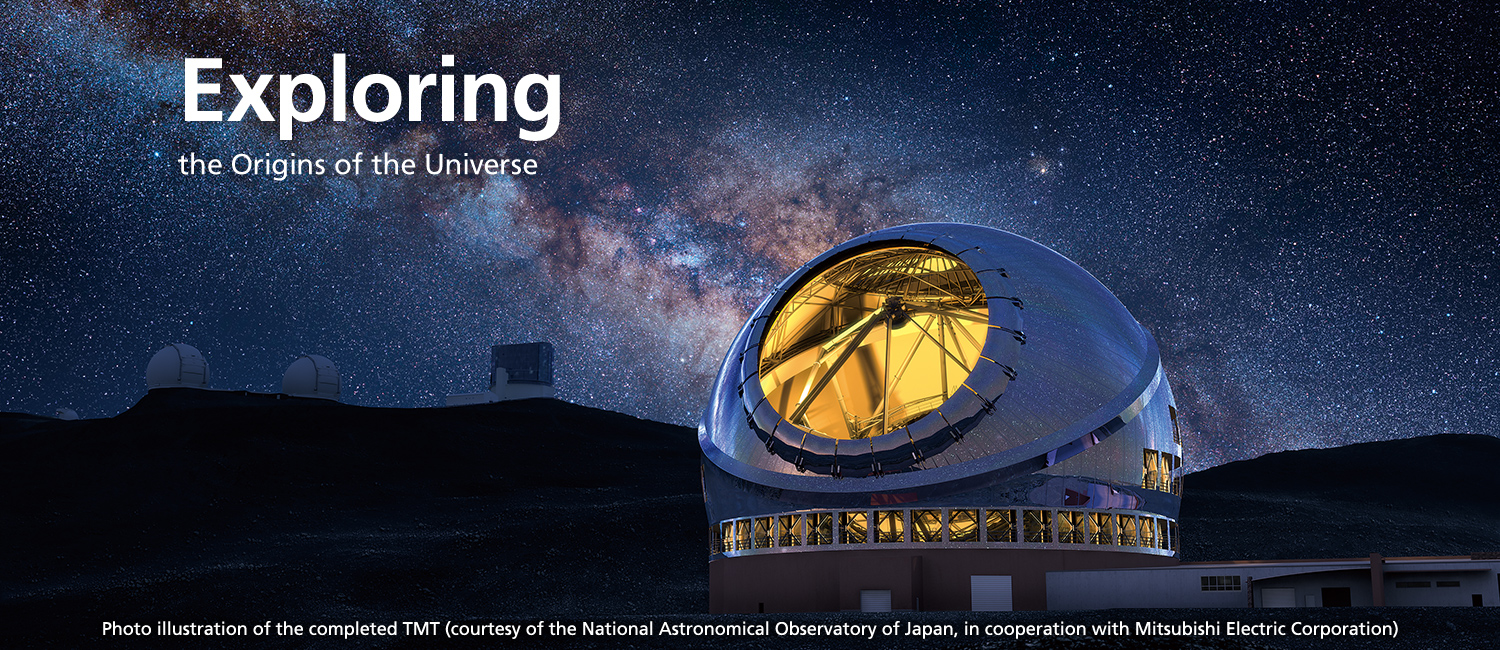

Helping to Solve the Mysteries of the Universe
Canon’s core strength in optical and imaging technologies is
also contributing to advances in astronomy.
Canon has been involved in the Thirty Meter Telescope (TMT) project to build
an extremely large 30-meter-diameter telescope in Hawaii,
and has been working independently to develop
an immersion diffraction element that will reduce
the size of infrared spectrometers used in astronomical telescopes.
December 27, 2018Featured Technology
[ TMT ]
Important Work on a International Collaborative Project
The TMT is a five-nation international collaborative project supported by Japan, the United States, Canada, China and India to construct a huge, 30-meter-diameter telescope in Hawaii. Canon’s proven track record in the development and manufacture of optics for the Subaru Telescope, National Astronomical Observatory of Japan, located at Mauna Kea, Hawaii, earned the company a role in manufacturing the mirror segments for the TMT. The TMT’s 30-meter-diameter primary mirror will comprise an array of 492 segments. Different segments (a total of 574 segments when including replacement segments) will be fabricated separately in Japan, the United States, China and India. Japan is responsible for the production of approximately 30% of the mirror segments. Canon began manufacturing mirror segments in 2014, taking charge of such work as grinding and polishing the mirror surfaces, and assembling the segmented mirror units.
The hexagonal segments, made of ultra-low-expansion glass, each measure 1.44 meters diagonally and have a thickness of 45 millimeters. The mirror surface has a maximum asphericity of 0.2 millimeters, requiring a level of precision of less than 2 microns peak-to-valley. Canon developed a proprietary processing and measurement system for large aspherical mirrors that is being used to mass produce the mirror segments.
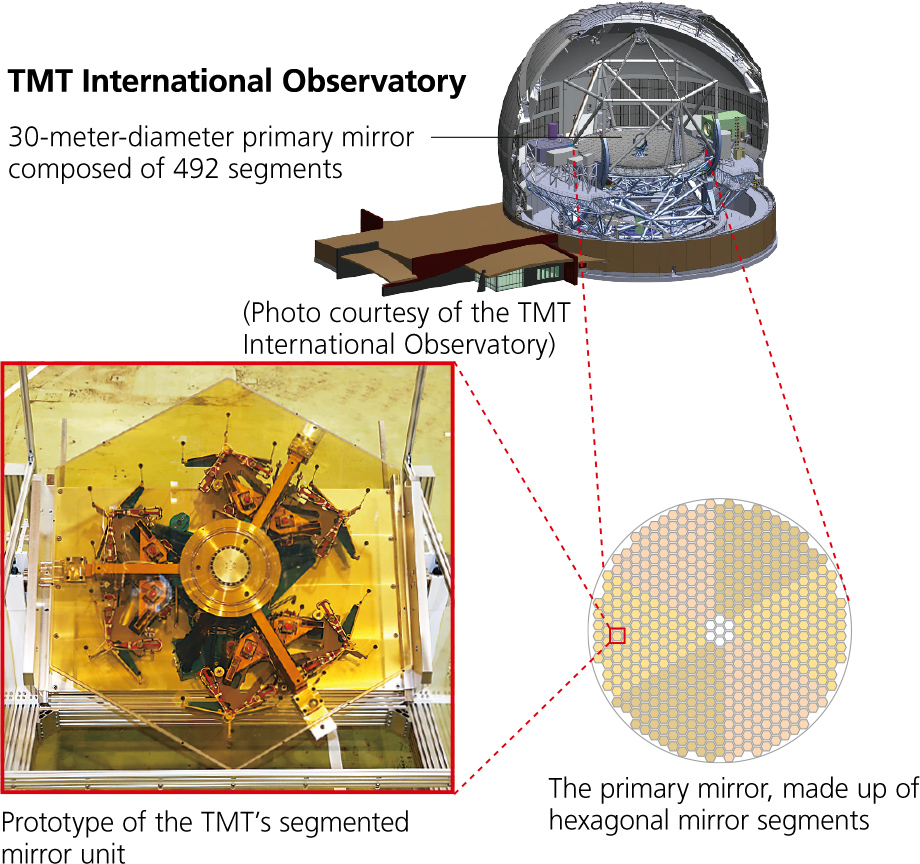
[ Infrared Immersion Gratings ]
Higher-Performance Infrared Spectrometers Could Support Investigation into the History of the Universe
#Imaging technologies#Space#Physics
In case of observing with an astronomical telescope in the space, a reflection grating has been used for a spectroscope that divides light for every wavelength in order to take out information. Canon has succeeded in developing three types—made of Germanium, Cadmium Zinc Telluride, and Indium Phosphide. These three types enable the separation of light into its spectral components, covering nearly all infrared wavelength regions. In the case of Indium Phosphide, the volume of spectrometer could reduce to about 1/27th compared with a case of conventional reflective grating with the same spectral resolution. According this effect, a space telescope which have various limitations of size and weight will be loaded with a high-performance spectroscopy. With the realization of practical immersion grating not available in the past, expectations are growing for improved light observation and control application in a wide range fields not only astronomy and aerospace but physics, chemistry and biology.
Indium Phosphide immersion diffraction element
(approx. 50 mm (l) x 20 mm (w) x 15 mm (h))

View of grading surface seen through an election microscope at 1,000x magnification


